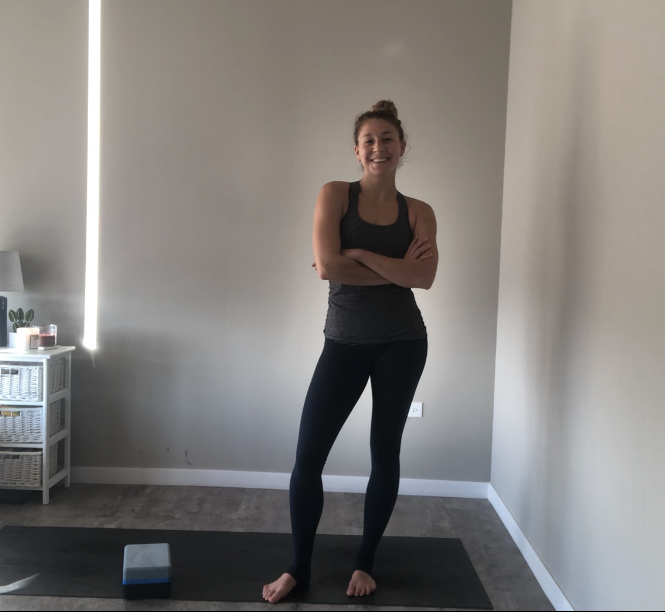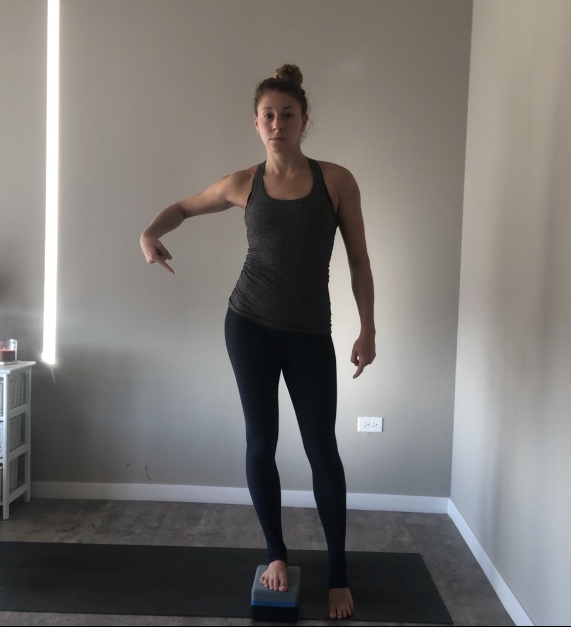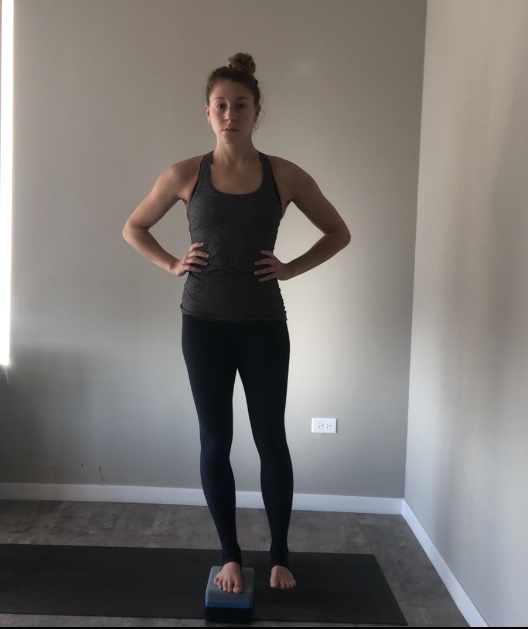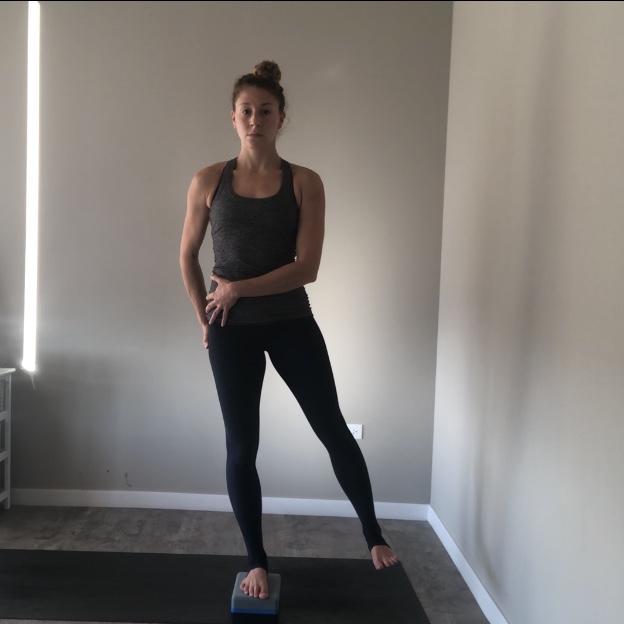access on-demand classes & education to empower your movement journey
Daily Posture Check: Do you have a cool-kid stance?
Whether we’re standing, doing daily chores around the house, or sitting (and these days – it’s mostly sitting), our bodies are doing a few repetitive actions over and over ahead, or holding a static position for, sometimes, quite a long time.
Just like if you were in a gym, you’d need to reset your position if you were aiming to do, say, 20 bent over rows. Likely somewhere at the end of your rep count, you’d be feeling it in your low back, upper shoulders, or somewhere else that your posture and form may be starting to give out, paving the way for other places within the kinetic chain to give way, too.
The same is true when moving through daily life. Daily Posture Checks posts highlight movements in daily life I find myself often coming out of alignment, an explanation of why & what that feels like, and a few exercises you can incorporate into your day (no more than 2-3 minutes each!) to help your body come back into proper posture and form and avoid chronic strain or overuse.
Class “cool kid” stance: sitting into one hip while standing

Generally, when we stand, and especially when standing on one leg, the muscles around the hip joint contract around the joint to keep it in its most safe and optimal position for balance & equal muscle activation on all sides.
When we stand off to one side, sitting or slouching into one hip (which moves the joint out of centration), rather than placing equal weight between our two feet, a few things happen. What I’ll speak to here is how our glute muscles that support the hip on the standing leg are unable to contract properly to support the hip.
And because we know that everything is connected, when one thing moves improperly, with less efficacy, or in a way that is out of alignment from what the joint should be doing, we know two things:
- We’ll be in a disadvantageous position to move with as much strength & integrity as we have, simply because we’re not in alignment
- Things throughout the kinetic chain can be affected either immediately or over time.
All that is to say: slouching into one hip is sub-optimal for our overall postural alignment, and posture is an indicator of how we’ll be able to move through all the types of movement & ranges of motion we theoretically should have.
So, what do we do about this? We can start by noticing when we’re assuming the cool-kid stance! Use your hands for tactile feedback to draw the muscles around your hips together to hug your hip if you’re standing on one leg or your weight is shifted over towards one leg. Balancing on one leg in and of iteslf isn’t the problem, it’s just the compensations we create when we balance improperly.
And, we can work on strengthening the glute medius, a primary stabilizer for the hips through a few different exercises. My favorite: block circles
You’ll need a yoga block for this exercise. Step your right foot up onto the block and hover your left foot beside your right. Place your hands somewhere near your right hip for more tactile feedback. Notice if your right hip starts to sink and you feel your hip dropping out or down and out of alignment. Just notice how that feels.

Hip drop (disadvantageous positioning for support) 
Co-contraction of muscles around right side of hip (more advantageous positioning for support)
Once you’ve got the feeling of the right hip IN alignment (not dropping down and out), maintain that feeling and keep your left foot hovering. Extend your left leg a few inches to the left. All the while keep thinking about pushing straight down into your right foot, standing tall over your right leg, and keeping your ears, shoulders, ribs & hips aligned (it’s a lot to think about!)

The final piece of this strengthening exercise is to make tiny circles (like dime-size!) with your left heel without letting your right side shift out of alignment. Make sure to go both ways with the circles. When you start to fatigue, step down and switch your sides. Over time, you’ll increase how long you can practice this motion without fighting to not compensate through the front of your hip, your quad, your calf, or somewhere else in your kinetic chain. Good luck!
The Content is not intended to be a substitute for professional medical advice, diagnosis, or treatment. Always seek the advice of your physician or other qualified health provider with any questions you may have regarding a medical condition. Istruction will involve physical exertion and it is solely your responsibility to rest and/or stop when appropriate regardless of encouragement or instruction. It is your responsibility to listen to your body and to keep yourself safe. It is your responsibility to consult a physician before beginning use of any fitness programming and wellness content. You should consult your physician or other health care professional(s) to determine if it is right for your needs. Do not start this fitness programming if your physician or health care provider advises against it. Not all exercise programs are suitable for everyone. Read more here.